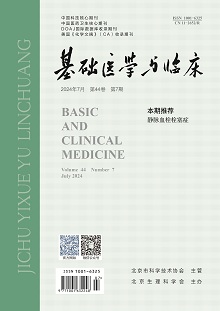Prevalence and related factors of diabetes in males with hepatitis B virus infection in Kailuan group
2019, 39(6):
805-809.
 Asbtract
(
265 )
Asbtract
(
265 )
 PDF (420KB)
(
316
)
Related Articles |
Metrics
PDF (420KB)
(
316
)
Related Articles |
Metrics
Objective To investigate the risk factors of diabetes in participants with chronic hepatitis B virus (HBV) infection. Methods A cross-sectional study was conducted to enroll all the males in Kailuan group who attended physical examination (n=81110) and had positive hepatitis B antigen in 2006-2007. Prevalence of diabetes with different characteristics were described, and factors related to diabetes were analyzed. Results A total of 2276 males were hepatitis B antigen positive(average age 49.5±11.7,years), among which 192 were diabetes, with prevalence of 8.4%. Multiple logistic regression analysis indicated age (40-49 years: OR=2.78,95%CI:1.52-5.09,p<0.001; 50-59 years: OR=2.66,95%CI:1.46-4.85,p<0.001;≥60 years: OR=4.69,95%CI:2.49-8.86,p<0.001), family history of diabetes (OR=3.44,95%CI:1.96-6.05,p<0.001), fatty liver disease (OR=2.02,95%CI:1.46-2.80,p<0.001), cirrhosis (OR=2.25,95%CI:1.02-4.95,p<0.05), and hypertension (OR=1.76,95%CI:1.27-1.42,p<0.001) were risk factors for diabetes, and current drinkers had a lower risk of diabetes(OR=0.71,95%CI:0.51-0.98,p<0.05).Conclusions Age, family history of diabetes, fatty liver disease, cirrhosis, and hypertension may be the risk factors for diabetes in males with HBV infection. Intervention should be applied in individuals with high risk of diabetes to prevent the onset of diabetes.


